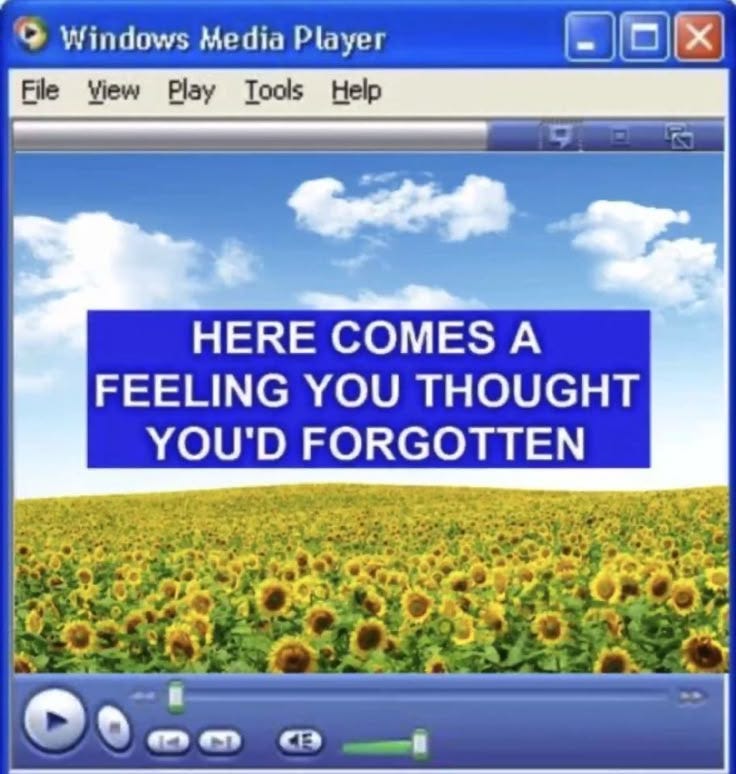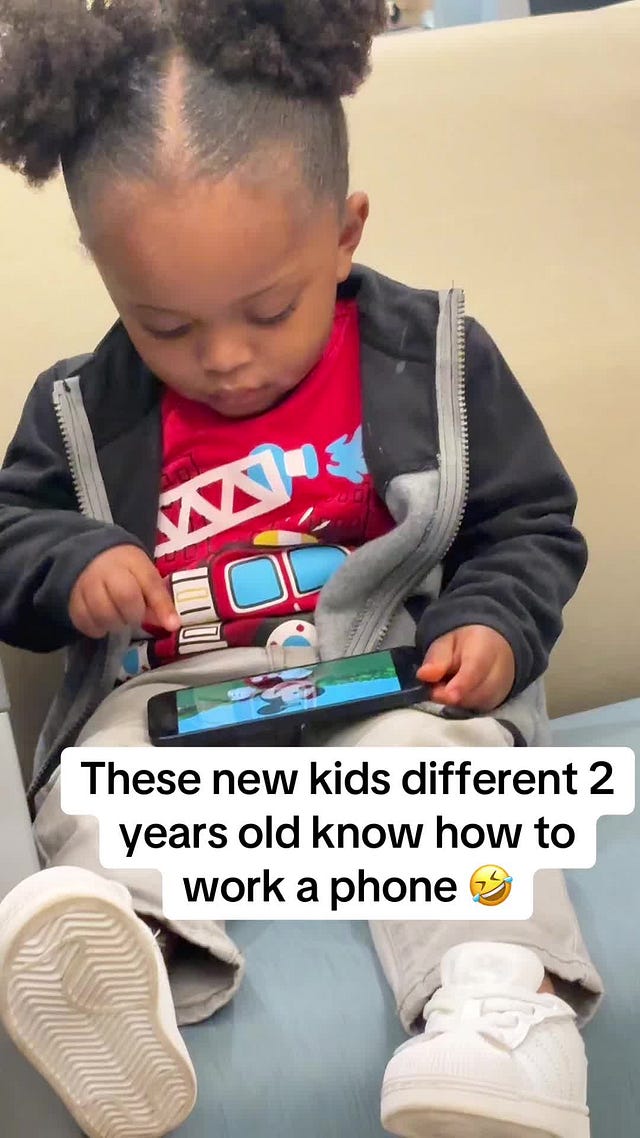Mentally, I’m Here :
I’ve been thinking a lot about nostalgia. Not the cute kind with old filters and fonts, but the kind that shows up in your body. The kind that sneaks in when a song from high school plays, or when you see an old screenshot from an app that doesn’t even exist anymore.
At first, I thought I was just being sentimental… Like am I turning into one of those adults who spend too much time looking back? But now I’m starting to realize my body isn’t just remembering moments—it’s remembering patterns, routines and the feelings I had during certain digital eras. So that’s where my head is at currently : thinking about how digital life sticks to us. In our minds and in our bodies, and maybe that’s not a bad thing.
Let’s get into it!
Nostalgia Needs a Rebrand
We’ve been misunderstanding nostalgia for a long time. In popular culture, nostalgia is often reduced to an aesthetic based on the grainy filters, pixel fonts, low-fi soundtracks, and the visual markers of an earlier internet. This surface-level branding flattens the depth of what is actually occurring when we engage with digital remnants from our past. As I’ve moved through my own personal archive, (old tweets, Instagram bios, even Vine audio) I’ve come to the conclusion that nostalgia is not just emotional—it’s somatic.
That thinking has inspired some new terminology : Techno-Somatic Memory: a term I use to describe the phenomenon of the body storing digital experiences as physical memories, in the same way we store grief, joy, or fear. It’s inspired by the psychological concept of somatic memory—the idea that the body holds onto experiences, even when the mind has moved on. This typically comes up in discussions of trauma and healing, but I’d like to suggest that the same mechanism applies to digital behaviors.
We live in an era of ritualized interaction.
Consider the repeated gestures we’ve made for years: scrolling, swiping, typing, posting, deleting, editing, refreshing. These are not just interface commands—they are rituals that have shaped our physical rhythms. Over time, these motions have become embedded into our nervous systems. They carry emotional weight and become instinct.
I’ll offer an example from my own life: I change my Instagram bio obsessively. (check my IG in a week lol)
My friends joke about it with me, and say “oh what’s your bio today DonYe?”, but I know where that behavior comes from. I was a MySpace kid. I grew up customizing people’s Myspace pages and using status boxes to project my mood, identity, and current playlist. My brain registers my Instagram bio as my status - an echo of Techno-Somatic Memory. The behavior migrated platforms, but never left my body.
Another observation: babies instinctively knowing how to operate cell phones without being taught.
They approach screens with innate fluency, and while it’s tempting to write this off as imitation, I believe its something deeper. These gestures like scrolling and tapping are becoming culturally and physiologically inherited. Not in a strictly genetic sense, but in the way our bodies encode what they’ve seen repeated. A special kind of digital epigenetics (the study of changes in organisms caused by modification of gene expression rather than changing of the genetic code itself) if you will.
 Tiktok failed to load.
Tiktok failed to load.Enable 3rd party cookies or use another browser
We are also living through what writer Ryan Hooper called “early-onset nostalgia”—a byproduct of our hyper-documentation. When we can revisit a memory within weeks of creating it, time collapses. Last month’s photo dump might feel like it belongs to an entirely different version of ourselves. The distance between “now” and “then” shrinks, and our ability to emotionally metabolize memories gets complicated. In this compressed reality, even recent moments can elicit a full-body sense of longing.
Which brings me to a core question: What if nostalgia isn’t a regression? What if it’s a level of intelligence?
Back in the day, nostalgia it was classified as a psychiatric disorder—literally viewed as a sickness. But contemporary research suggests the opposite. Nostalgia, when engaged with consciously, is a grounding force. It reinforces identity. It reduces stress. It helps us organize time. And when experienced somatically, it gives us a map for meaning.
Brain Snacks
A few things for your mind to nibble on
Book: The Body Keeps the Score by Bessel van der Kolk — the foundation for understanding how our bodies store memory. Techno-Somatic Memory is my remix of this idea through a digital lens.
Song: JAY-Z - Can I Get A... ft. Amil, Ja Rule
You didn’t have to be outside in '98 to feel the ripple effect of “Can I Get A…” Produced by Irv Gotti, featuring a then-rising Ja Rule and Amil, this track was more than just a single off the Rush Hour soundtrack, it was a cultural timestamp. This song perfectly illustrated the era. Jay Z provided the blue print and yet and still, people can’t duplicate this vibe. The second the beat drops, my shoulders move on their own. My body knows the beat before my brain catches up. That’s how deep it lives in the archive. TECHNO SOMATIC MEMORY ok!
Fun Fact: Neuroscientists found that nostalgia can actually reduce physical pain. So yeah, your old playlist might be more powerful than Advil.
Techno-Somatic Memory is my way of naming this embodied archive. So no, I don’t think we’re “too nostalgic.” I think we’re remembering exactly how we were designed to: through the senses, through repetition, and through the quiet archive of the body.
Thank you for reading!
DonYé








Now I know why I prefer my 2000s music over anything else! The next time my wife says something about it, ima throw some "Techno Somatic Memory" on it OKAY?!!!
SN: your videos on the creation of your Top 8 Hairstyles was too cute!
Love Seeing Your Pictures, Niece 😘